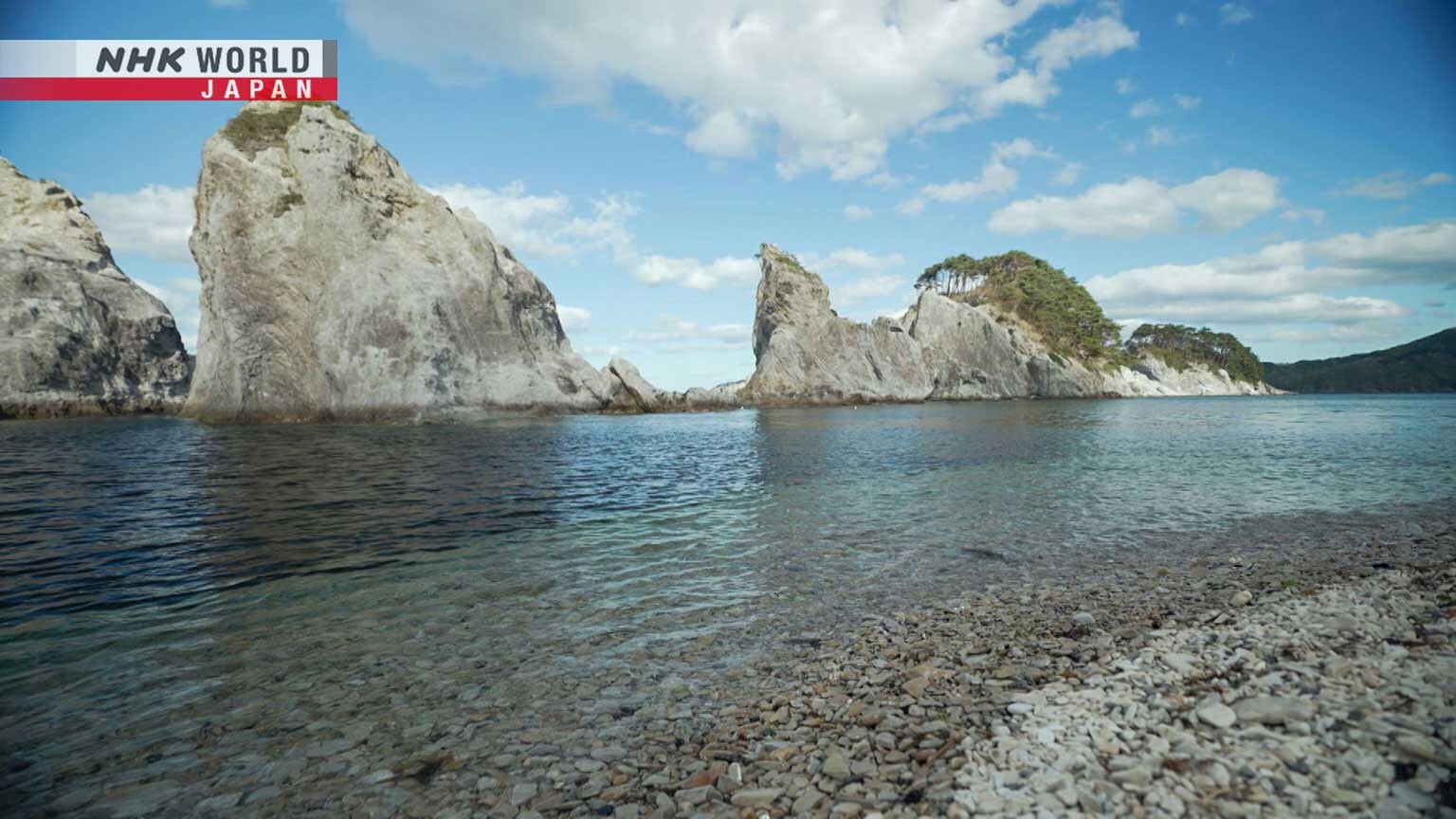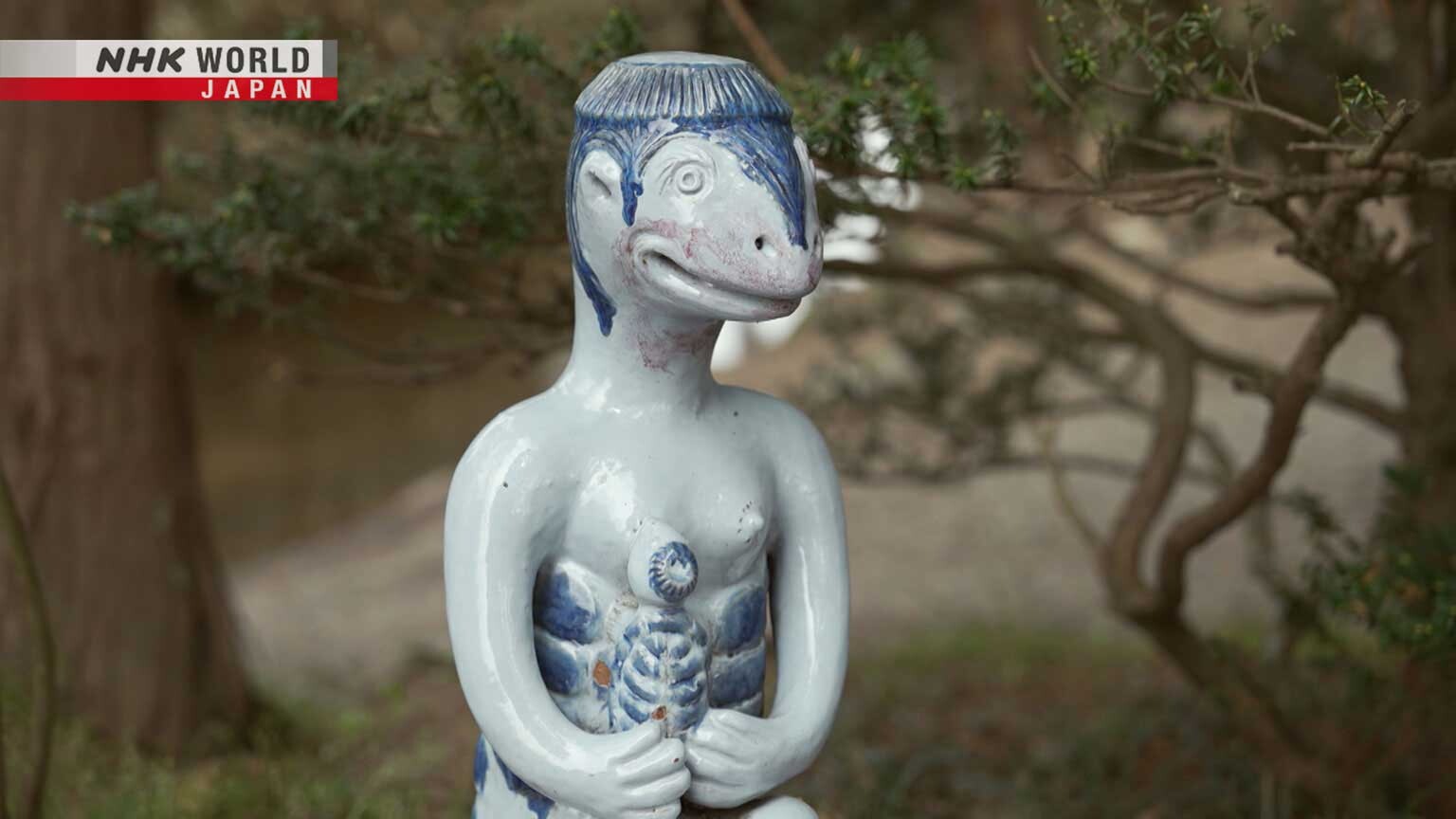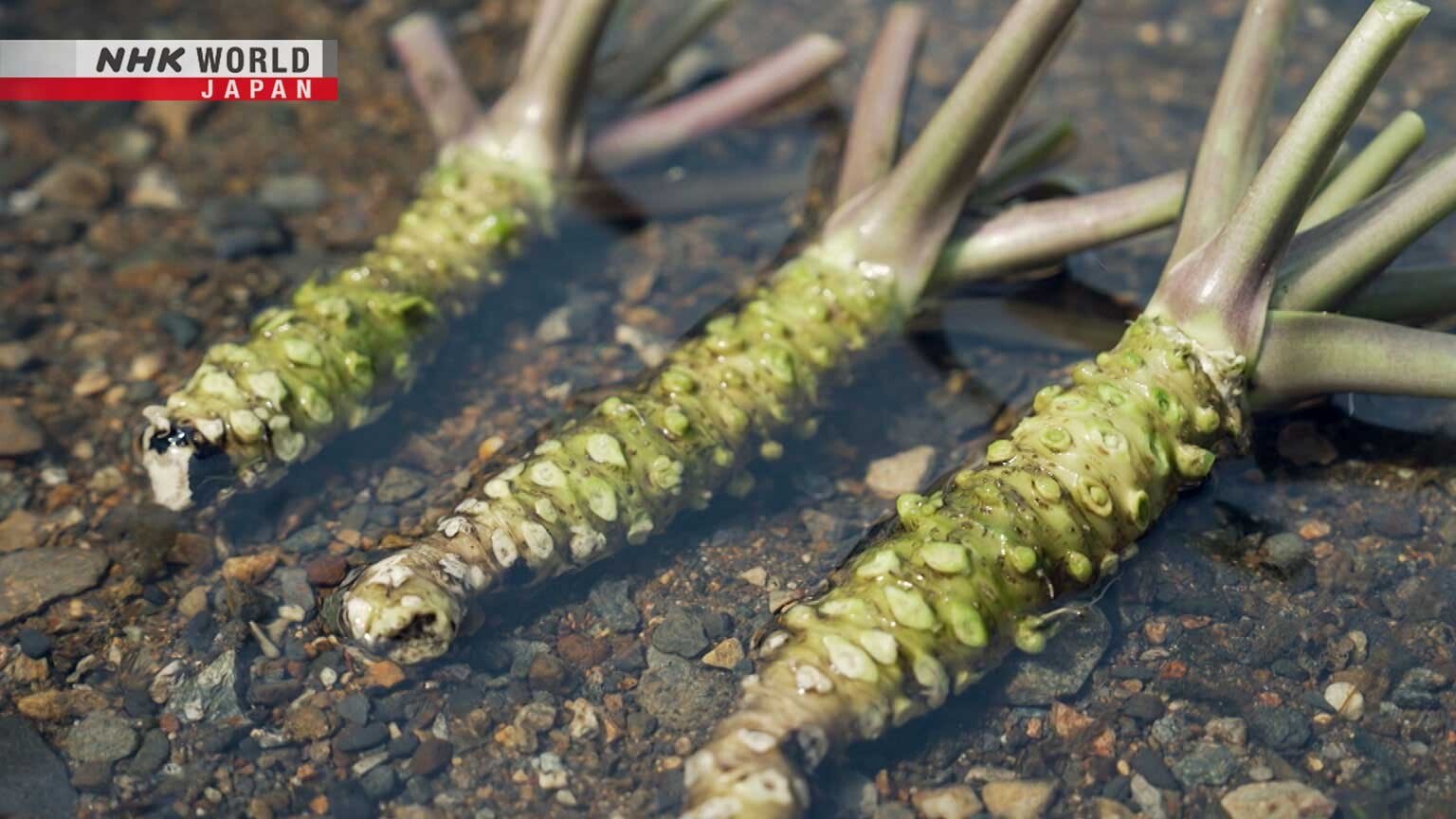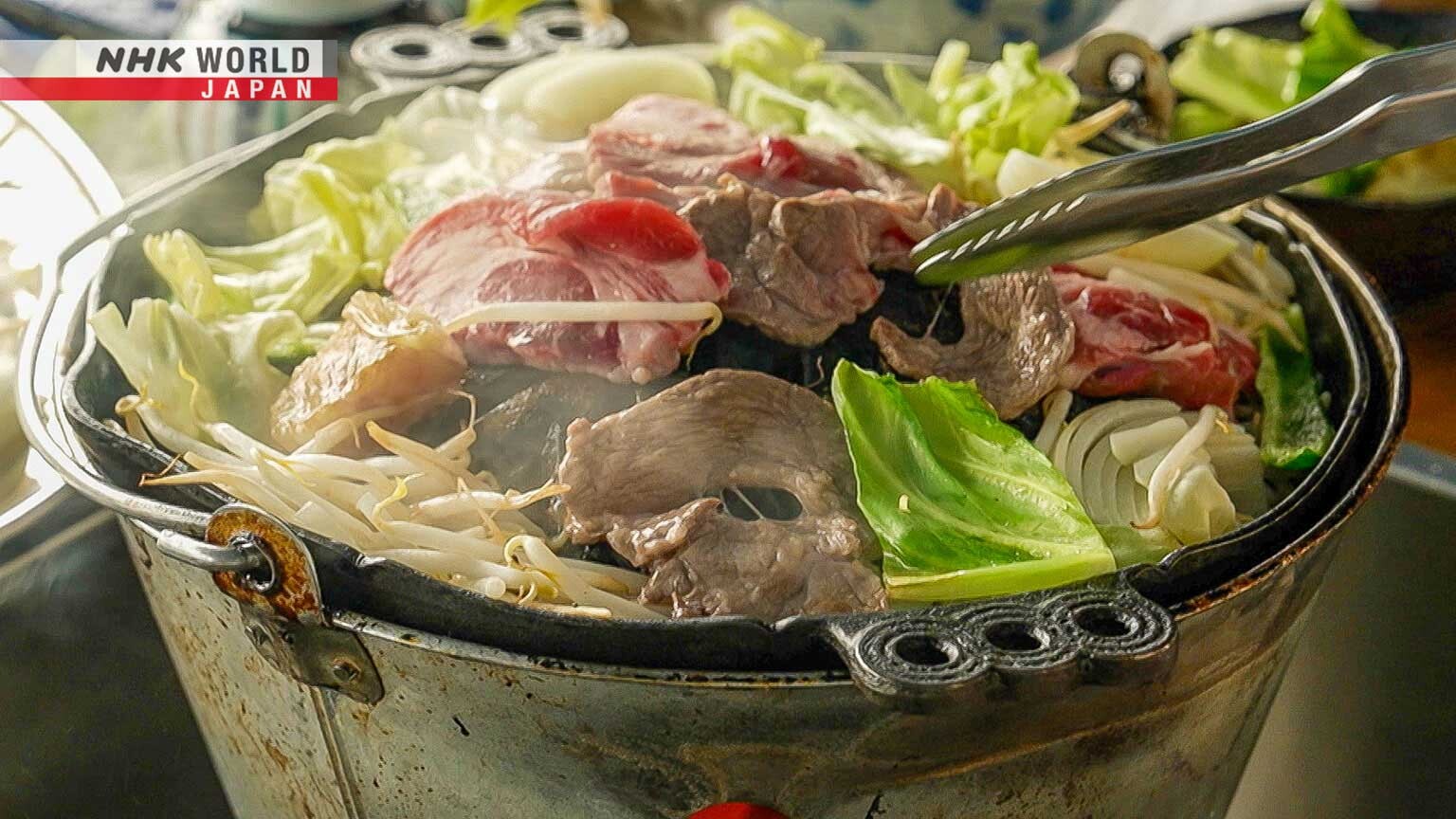IWATE
Come on a scenic drive through Iwate Prefecture's rich nature. Starting from Morioka station, we head to the picturesque Jodogahama Beach. Along the way we make a detour to Tono, known for its kappa legends.




Transcript
If you wish to really see Japan, get behind the wheel.
Notable places and interesting people are waiting just off the beaten path.
This time, we're in the northeastern prefecture of Iwate.
Our starting point is Morioka Station, a Shinkansen bullet train stop.
We'll finish our day at Jodogahama beach.
This stunning scenery has been drawing visitors since antiquity.
Iwate is a land of water.
Pure mountain springs.
Rivers filled with life.
And the majestic Pacific.
A water-themed drive-in northeast Japan.
Let's hit the road.
Welcome to Iwate.
I'm your navigation system.
Today we have some fantastic places to visit!
Morioka is Iwate's biggest town.
It's a place with a lot of history.
The stone walls on the right were part of a 17th century castle.
Once it was built, Morioka grew up around it.
The castle was built here for a reason.
Rivers.
This is the Nakatsu River.
And that's the Kitakami River.
The rivers didn't just help defend the castle.
They were essential for transporting supplies.
Thanks to its abundant water, Morioka is known for three kinds of noodles.
Wanko soba.
The refills keep coming until you give up.
Morioka reimen.
Buckwheat and potato-starch noodles in cold soup.
Firm and chewy.
And Jajamen, flat udon in meat and miso sauce, garnished with cucumbers.
Moriokans have always cherished their water.
Let me show you.
Watch out for pedestrians.
The width of this road is said to be unchanged since the 19th-century.
Traditional architecture is everywhere.
Notice something a little further on the right?
You'll find something carefully preserved by local residents for generations.
A public well.
For 150 years, the natural spring's renowned water has been a center of local life.
Consisting of a series of pools with different uses...
the closest to the well source is for drinking water.
Now we head to the ocean.
The Jodogahama coast, our final destination, is two hours west.
But first we'll head south, to Tono, a town steeped in mystical folklore which we'll introduce later.
We'll take the Tohoku Expressway from the Morioka Interchange.
We've reached Tono.
We'll exit at the Miyamori Interchange.
The mountain town of Tono is a place where old folktales survive and thrive.
Let's stop into a hub for Tono's culinary culture and mysterious legends.
"Michinoeki Tono Kazeno Oka."
Here we are.
Have fun!
Here you can experience Tono's signature cuisine.
This is "Genghis Khan."
Lamb and vegetable barbeque.
People brought the concept from China after the war.
Food was very scarce at the time.
People turned to eating the sheep they had raised for wool.
Bucket-style stoves for tabletop convenience.
Most locals enjoy Genghis Khan at least once a month.
Every now and then we just have to have it.
Tono Genghis Khan makes any kind of get-together relaxing.
There's a huge selection of direct-to-consumer products.
Fresh wild plants from the mountains.
Wild plants are part of Japanese cuisine.
One essential ingredient grows only in pure, clean water.
Wasabi has been grow in this area for more than 100 years.
This region has abundant spring water.
We use it to grow delicious wasabi.
Cold spring water is essential for wasabi.
The water flows over terraced growing beds.
We cultivate what is considered the best variety of wasabi.
We stand behind our quality.
An unusual miniature shrine is on display.
A mythical creature called a kappa.
It has a duck-like face and a plate on its head.
This aquatic creature is said to love cucumbers.
But do they really exist?
How was it?
Now let's find those kappas.
They say you just might see one here, at Kappabuchi creek.
Look to your right.
There's a famous kappa spot behind that temple.
Rumor has it that kappas live in this stream.
They love to play tricks on people.
But when the temple caught fire, they helped the people put it out.
Why not grab a cucumber and try to catch one yourself?
You might even meet the local kappa expert.
This is Unman Haruo, also known as "Uncle Kappa."
His knowledge of local folk tales is encyclopedic.
The tales he tells have been handed down orally for generations.
I've been doing this for 23 years.
But I haven't caught a single kappa.
Now on to our final destination.
The Jodogahama coast is best seen from offshore.
The tour boat leaves from the "Michinoeki Miyako" rest stop.
We'll be there in about an hour.
There's the Pacific.
Iwate's coastline is studded with capes and inlets - beautiful, but dangerous if a tsunami hits.
This seawall is 10 meters high.
It was built after the tsunami of March 2011 devastated Iwate.
On the right is "Michinoeki Miyako."
Inside you'll find products supporting Iwate's recovery.
A line on the building shows the tsunami max height.
The market offers a fish that is helping the region recover.
Trout salmon are rainbow trout bred for size.
The flesh is very rich. Everyone likes it.
It's popular with kids and young people.
The whole region embraced trout salmon farming.
Shipments began in 2020.
Innovative cuisine is also helping regional recovery.
Bottles hold a "parfait" of assorted sea food.
Different combinations make for endless variety.
Spread them out on a bed of rice and dig in!
The tour boat landing is close by.
Offering spectacular views, this 50-minute cruise is a fitting end to a drive in Iwate.